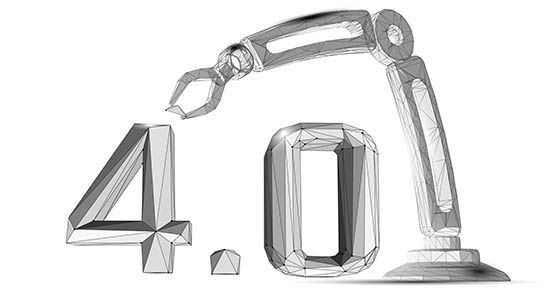
Are You Prepared to Join the Manufacturing 4.0 Revolution?
Manufacturing 4.0, sometimes called “Industry 4.0,” refers to the digitalization of manufacturing. That means the integration of traditional manufacturing processes and practices with cutting-edge “smart” technology.
How might Manufacturing 4.0 benefit your manufacturing company? According to companies that have already adopted some or all of its technologies and practices, Manufacturing 4.0 can enhance productivity and quality, improve efficiency, minimize costs, and increase workplace safety.
Building blocks of Manufacturing 4.0
Manufacturing 4.0 leverages the latest technological developments, including the Industrial Internet of Things (IIoT), artificial intelligence, blockchain, machine learning, automation, robotics, virtual reality, advanced data analytics and additive manufacturing, such as three-dimensional (3D) printing.
Manufacturers that make the most of these technologies to create smart factories can gain a competitive advantage. Indeed, this became evident during the pandemic and the subsequent supply chain challenges. Manufacturers that had adopted technologies that streamlined and automated the supply chain and allowed them to monitor and operate Internet-connected devices had a definite advantage.
Potential benefits
Industry 4.0’s integration of people, machines and data creates virtually limitless opportunities to improve manufacturing operations. Examples include:
Enhanced productivity. At one time, workers would wait for machines or equipment to break down before repairing or servicing them. This reactive approach led to significant downtime and lost productivity. In response, many manufacturers shifted to a preventive approach, replacing parts or performing maintenance according to a predetermined schedule (for example, every 1,000 hours of machine operation).
A smart factory takes advantage of predictive maintenance: Wireless sensors embedded in manufacturing equipment can alert a technician when service is needed — even if the technician is off-site. It may even be possible, using robotics and artificial intelligence, to teach machines to fix themselves.
Supply chain and logistics flexibility. By taking advantage of interconnected supply chains, manufacturers can track materials and products throughout the process, obtain information about changing conditions (such as weather delays, natural disasters, health risks and political unrest) and make adjustments in real time.
Workplace safety. Manufacturing 4.0 can improve factory safety in several ways. For example, sensors similar to those that notify you of the need for maintenance or repairs can also alert you to potentially dangerous conditions. They can provide warnings or even shut or slow down equipment if a worker enters a hazardous area. Plus, the ability to monitor and operate machinery or equipment remotely minimizes workers’ exposure to risks of injury or, in the case of a pandemic, infection.
Cost savings. Adopting Manufacturing 4.0 technologies can reduce costs in many ways. For example:
- Robotics and automation can reduce labor costs and allow the factory to operate 24/7,
- Real-time monitoring and quality control can reduce product returns and eliminate waste,
- Predictive maintenance can minimize costly repairs and downtime, and
- Remote monitoring can reduce accidents and injuries, which reduces costs.
Finally, technologies such as 3D printing can reduce costs by streamlining the manufacturing process and shortening delivery times.
Gauge your readiness
If you’ve yet to take the plunge into Manufacturing 4.0, be sure to gauge just how ready your company is. For example, is your current technology infrastructure able to handle the data storage and processing requirements of today’s smart factory? Is your company’s culture amenable to the type of change needed to make the transition? Are you prepared to shift your workforce to the more highly skilled labor required to oversee a smart factory? Are you ready to adapt your product development processes to a more automated environment?
If you answered “yes” to these questions, it may be time to explore the competitive advantages and other benefits Manufacturing 4.0 has to offer. We’re here to help you with analyzing the financial aspects of adopting Manufacturing 4.0.
© 2023